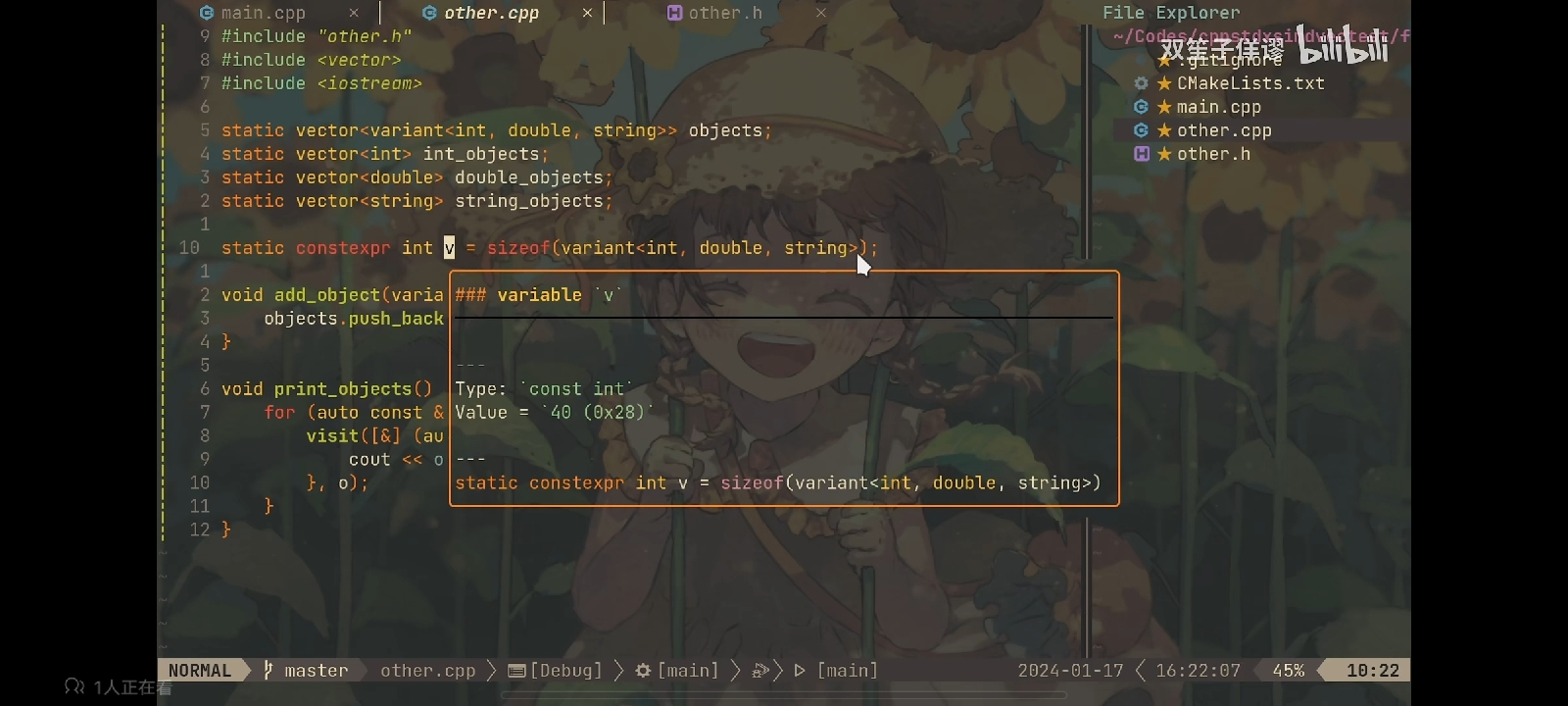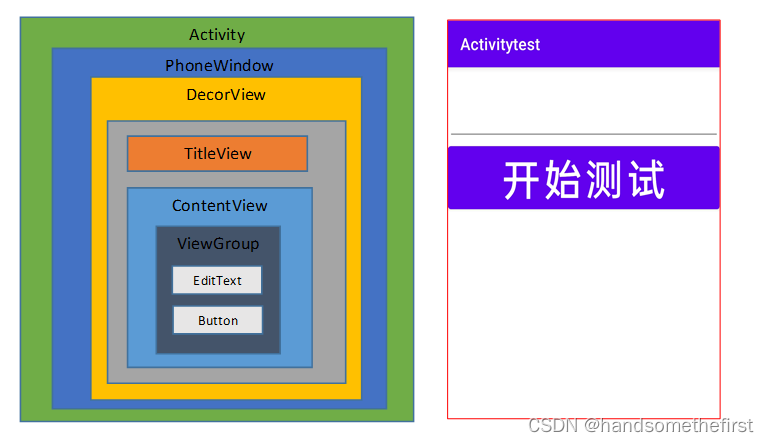文章目录
- 一、分离模板的声明与定义方法一
- 二、分离模板的声明与定义方法二
- 参考
一、分离模板的声明与定义方法一
在模板定义的cpp文件中声明其特化版本
other.h
#pragma once#include <iostream>
#include <string>using namespace std;template<typename T>
void show(T t);
oher.cpp
#include "other.h"
template<typename T>
void show(T t)
{cout<<"t"<<'\n';
}template void show<int>(int);
template void show<double>(double);
template void show<string>(string);二、分离模板的声明与定义方法二
使用variant(C++17语法)代替上述的方式
other.h
#pragma once
#include <iostream>
#include <string>
#include <variant>using namespace std;void show(variant<int , double, string> t);
other.cpp
#include "other.h"void show(variant<int , double, string> t)
{cout << t.index() <<endl;
/*
visit内部的实现方式可能就是通过index()选择的;
auto visitor = [](auto&& arg){cout<<arg<<endl;};if (t.index() == 0)
{visitor(get<int>(t));
}
else if (t.index() == 1)
{visitor(get<double>(t));
}
else if(t.index() == 2)
{visitor(get<string>(t));
}or
if (holds_alternative<int>(t))
{visitor(get<int>(t));
}
else if (holds_alternative<double>(t))
{visitor(get<double>(t));
}
else if(holds_alternative<string>(t))
{visitor(get<string>(t));
}
*/visit([](auto&& arg){cout<<args<<endl;},t);
}
解决了分离模板的声明与实现后,如果想要把每个variant对象保存至vector,出现的问题是:每个variant=32+8,string bytes+index bytes。每次占用内存过大,需要优化。所以使用data-oriented design进行改造
other.h
#pragma once#include <string>
#include <variant>using namespace std;using Object = variant<int, double, string>;void add_object(Object o);
void print_objects();
other.cpp
#include "other.h"
#Include <vector>static vector<variant<int.double.string>> objects;
static vector<int> int_objects;
static vector<double> double_objects;
static vector<string> string_objects;static constexpr int v = sizeof(variant<int.double.string>);void add_object(variant<int.double.string> o)
{objects.push_back(o);objects
}void print_objects()
{for(auto&& o : objects){visit([](auto&& arg){std::cout<<arg<<std::endl;},o);}
}

other.cpp
#include "other.h"
#Include <vector>static vector<int> int_objects;
static vector<double> double_objects;
static vector<string> string_objects;void add_object(variant<int,double,string> o)
{if(holds_alternatibe<int>(o)){int_objects.push_back(get<int>(o));}else if(holds_alternatibe<double>(o)){double_objects.push_back(get<double>(o));}else if(holds_alternatibe<string>(o)){string_objects.push_back(get<string>(o));}
}void print_objects()
{for(auto&& o: int_objects){cout<<o<<endl;}for(auto&& o: double_objects){cout<<o<<endl;}for(auto&& o: string_objects){cout<<o<<endl;}
}
使用编译器for循环以及tuple简化代码
static tuple<vector<int>. vector<double>, vector<string>> objects;void add_object(variant<int, double, string> o)
{if (o.index() == 0){std::get<0>(objects).push_back(std::get<0>(o));}else if (o.index() == 1){std::get<1>(objects).push_back(std::get<1>(o));}else if (o.index() == 2){std::get<2>(objects).push_back(std::get<2>(o));}
}void print_objects()
{for(auto&& o: std::get<0>(objects)){cout<<o<<endl;}for(auto&& o: std::get<1>(objects)){cout<<o<<endl;}for(auto&& o: std::get<2>(objects)){cout<<o<<endl;}
}other.cpp
static tuple<vector<int>. vector<double>, vector<string>> objects;template<int N>
struct int_constant{static constexpr int value = N;
};template <int N, typename Lambda>
void static_for(Lambda&& lambda)
{if constexpr (N > 0){static_for<N-1>(lambda);int_constant<N-1> ic;lambda(ic);}
}void add_objects(variant<int, double, string> o)
{static_for<3>([&](auto ic){std::get<ic.value>(objects).push_vack(std::get<ic.value>(o));});
}void print_objects()
{static_for<3>([&](auto ic){for(auto&& o: std::get<ic.value>(objects)){cout<<o<<endl;}});
}取出variant中的所有类型,以vector<x>,vector<y>的形式放在tuple中的类型中。即Object类型->Objects类型
other.cpp
template <class V>
struct variant_to_tuple_of_vector
{
}template <class ...Ts>
struct variant_to_tuple_of_vector<variant<Ts...>> {using type = tuple<vector<Ts>...>;
};static variant_to_tuple_of_vector<Object>::type objects;自动提取variant中所有参数的个数,优化lambda只在输入的variant变量中插入
other.cpp
void add_objects(variant<int, double, string> o)
{static_for<std::variant_size_v<decltype(o)>>([&](auto ic){if (o.index() == ic.value){std::get<ic.value>(objects).push_vack(std::get<ic.value>(o));}});
}void print_objects()
{static_for<std::variant_size_v<decltype(o)>([&](auto ic){for(auto&& o: std::get<ic.value>(objects)){cout<<o<<endl;}});
}
参考
- 【C++模板课】闭源软件能否元编程?
- code






